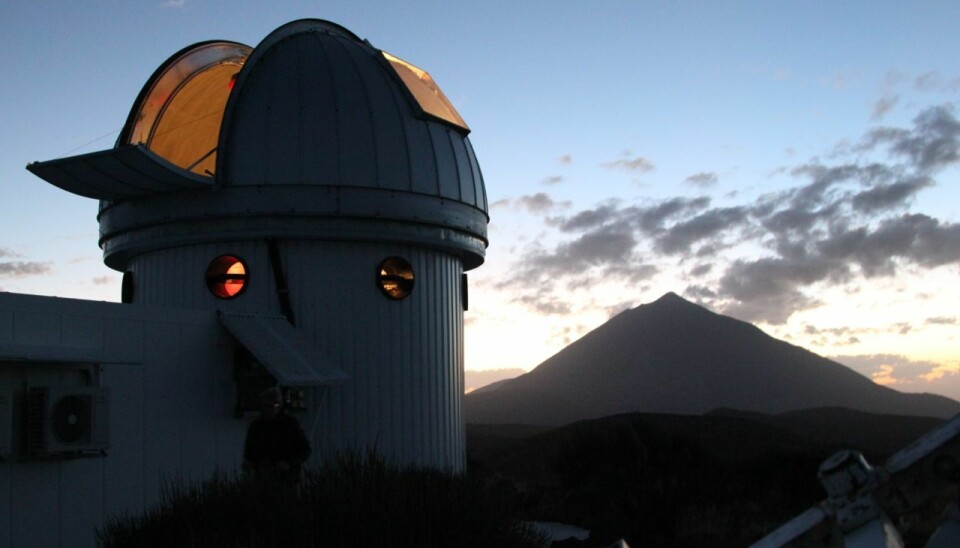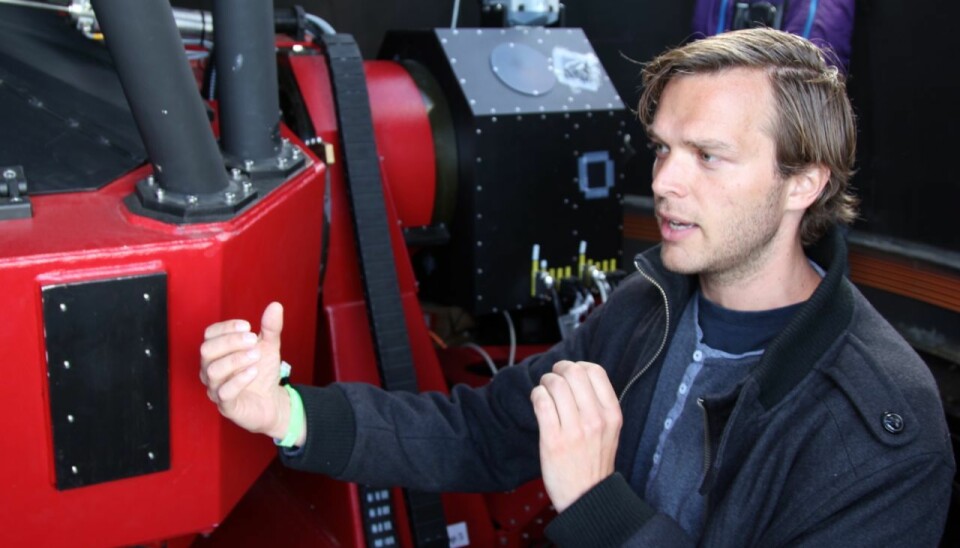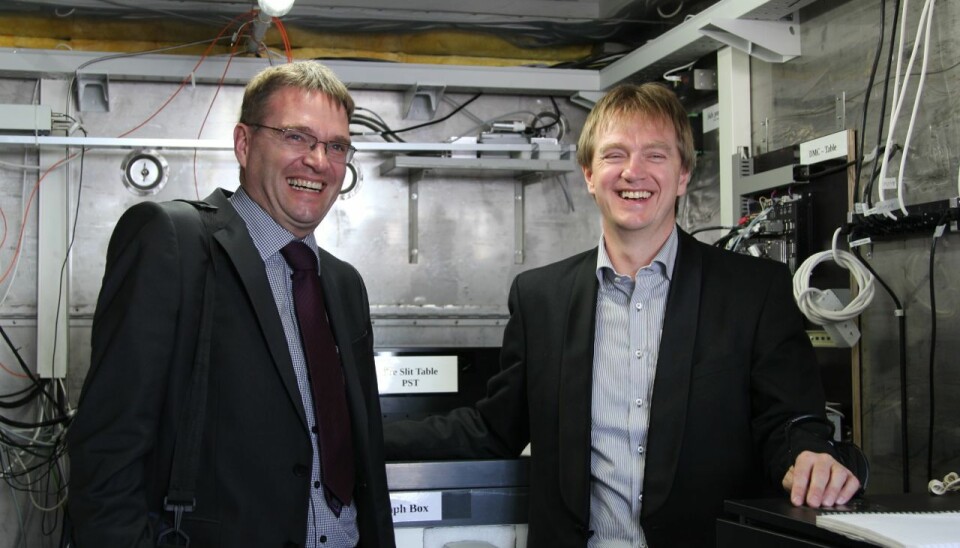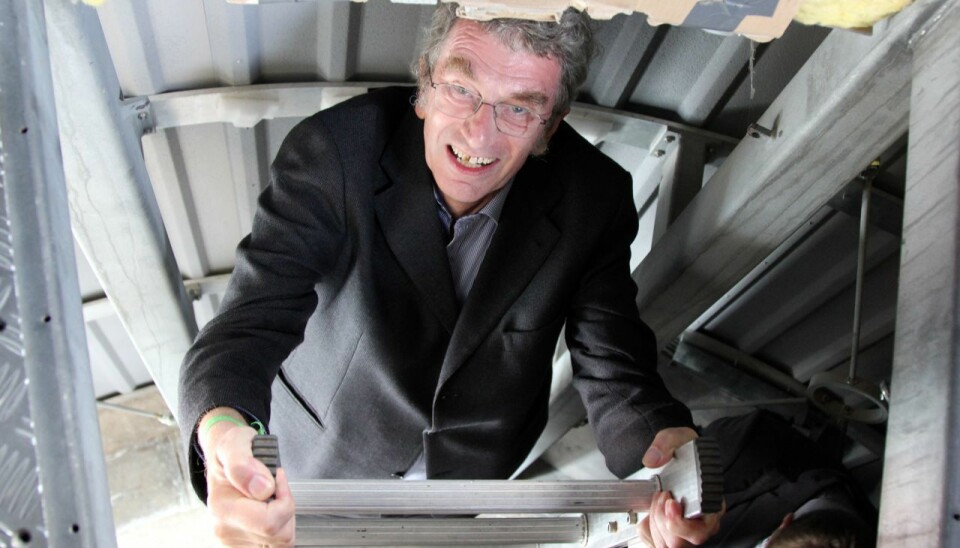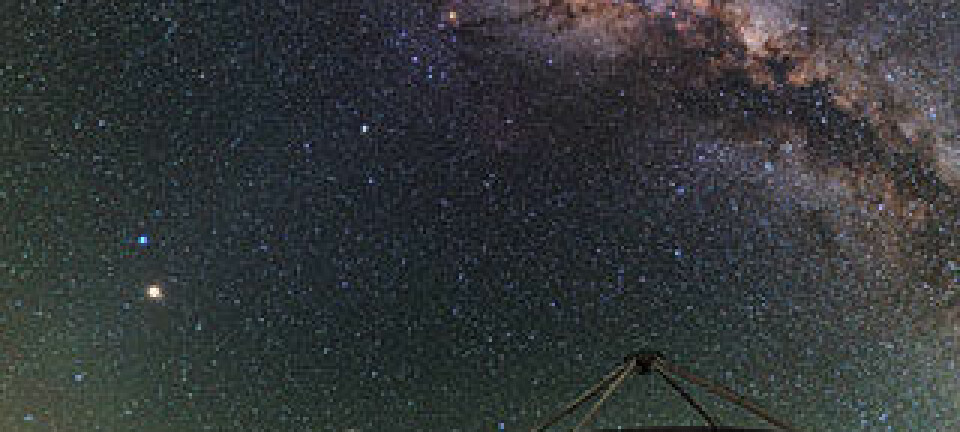
New telescope will unlock secrets of the universe
A new Danish-led telescope in the Canary Islands will allow us to gaze at distant stars and planets. ScienceNordic.com joined the enthusiastic scientists at the opening ceremony of the new, highly advanced equipment.
With the new telescope scientists hope to find new and habitable planets and to uncover exciting secrets about the stars.
”It has been an absolutely fantastic day. I could not hold back a little tear when our dean officially unveiled the telescope," says Professor Jørgen Christensen-Dalsgaard from Aarhus University, the senior manager of the new SONG telescope. “Building it has cost blood, sweat and tears”.
Scientists: It's fabulous
Attending the opening of the SONG telescope at the top of Izaña on Tenerife in the Canary Islands, were two bus loads of Danish and foreign researchers, university staff, foundation representatives and other stakeholders.
The telescope has been erected here, looking out over the rocky volcanic landscape in the Teide National Park and, of course, with an exceptional view of the stars.
For some of the scientists it was the first time they saw the new telescope.
"It's terrific to stand here today. We've been sitting in a basement in Copenhagen for years, building the telescope's camera and developing software for it. So it's fantastic to see that the whole thing is finished and ready to run," says senior lecturer from the University of Copenhagen, Uffe Gråe Jørgensen, head of planet research at the SONG project.
Network of telescopes to be built
If all goes according to plan, the new SONG telescope is the first out of an entire network of telescopes.
The idea is to build a total of eight telescopes around the world, all of which will be built according to the Danish design.
The idea of having a network of telescopes is that when the Earth rotates and it therefore gets too light at one telescope, then you can continue your observations at the next one, explains senior lecturer Frank Grundahl from Aarhus University, who is also part of the project.
Accurate copy of SONG in China
So far, however, they have only managed to finance two of the telescopes – the one on Tenerife and an almost identical copy built by Chinese scientists.
"The telescope itself is slightly different, but we have built the telescope's instruments strictly in accordance with the Danish design so that we will be able to coordinate our data,” says Professor Licai Deng, who leads the Chinese part of the SONG project.
He is counting on being able to invite people to the opening of the SONG telescope in De Ling ha in central China next year.
Why Tenerife?
Grundahl explains that the SONG telescope could not be located in Denmark, simply because the weather is too poor.
Furthermore, they chose Tenerife, because the Danes have a good working relationship with astronomers on the island.
"On Tenerife there are usually between 250 and 300 nights a year when it's clear enough to observe the sky with a telescope, and getting to and fro between Tenerife and Denmark is cheap and easy," explains Grundahl of the Stellar Astrophysics Centre at Aarhus University.
The telescope is automatic
The scientists do not need to travel to cloudless Tenerife to control the telescope, because it can be controlled remotely via the Internet.
"The telescope functions entirely automatically. We have spent a lot of time developing software that enables us to tell the telescope in the afternoon what we want it to observe the following night. Nobody needs to be there to operate it at night – the telescope points itself at the Star we have asked it to observe," says Grundahl.
---------------
Read the original story in Danish on Videnskab.dk
Translated by: Hugh Matthews

